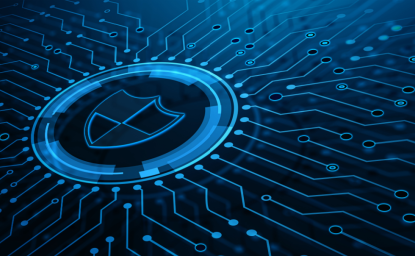
A blog of the Science and Technology Innovation Program

This blog post originally appeared on Debugged, a Wilson Center Blog from the Digital Futures Project.
Massacres were once a rare thing — isolated events, witnessed only by a few and hardly ever captured on film. The world learned about them days or weeks later, sometimes years.
Shootings, rampages and mass killings in Santa Barbara; Munich; Baton Rouge; Sutherland Springs; Las Vegas; Parkland, Florida; San Bruno, California; and now Toronto reveal a troubling trend. In a bizarre behavioral epidemic, we’re seeing an amplification of this form of violence. It’s something that professionals in my field are becoming all too familiar with; 2017 was the worst year for mass killings in the US, and 2018 seems to be following a similar pattern — earlier this month an extremely worrying statistic was reported “We’re only 16 weeks into 2018, and there have already been 20 school shootings where someone was hurt or killed. That averages out to 1.25 shootings a week.
The Internet has given us connectivity, online community, access to information and countless other benefits. But, in many ways it is wreaking havoc on human behavior, pushing rapid changes in societal norms that social and behavioral scientists are only beginning to understand.
As a cyberpsychologist who specializes in criminal behavior, I have been involved in a dozen research silos related to these changes — from cyberstalking to organized cybercrime — and the single irrefutable fact I’ve observed is that whenever technology interfaces with a base human tendency, the result is amplification and acceleration of that tendency. We all experience the negative psychological impacts of the online experience, from smartphone addictive type behaviors, to having our attention hijacked by commercial enterprises that seek to profile, micro-target and monetize us online. For deeply troubled individuals and the mentally ill, however, the effects can be far more problematic.
The technology of cyberspace was designed to be rewarding, engaging and seductive for “normal” population, that is, most of us. What we failed as a society to foresee was how it would impact criminal, deviant, abnormal and vulnerable populations.
The Isla Vista rampage near UC Santa Barbara was all over in less than ten minutes; six victims were dead and 13 wounded. A young man, Elliot Rodger, was found slumped at the wheel of a BMW, a self-inflicted gunshot wound to his head, three semiautomatic handguns and over 400 rounds of ammunition by his side. Rodger’s laptop search history revealed his profoundly disturbed digital exhaust, frenzied search of Nazis, weapons, knives and torture devices. Rodgers had found an outlet for his anger on Internet communities, leading to his family contacting police weeks before the shootings out of concern about his increasingly agitated online rants. Notably one of his comments on PUAhate.com stated that he had discovered a community “just like me” who have “confirmed many of the theories I had about how wicked and degenerate women really are”. Rodgers detailed his mass murder plot in an unnerving manifesto along with a delusional video directed at an audience somewhere in cyberspace — was he talking to relatives of his victims? Or was he talking to like-minded profoundly disturbed individuals, aiming to incite similar acts of violence? When news of the killings spread some users actually posted adulatory comments to his online profile.
Nearly four years later, on the 23rd April 2018, in a disturbing copycat crime that has been described as an act of “pure carnage,” Alek Minassian drove a white rental van onto a busy Toronto sidewalk, killing 8 Women, 2 men, and injuring 15 people. It has been reported that shortly before the attack Minassian made a series of ominous posts on Facebook “The Incel Rebellion has already begun!”… “All hail the Supreme Gentleman Elliot Rodger!” The so-called “incel” movement is an online community of ‘involuntary celibate’ misogynists united in their desire to target and terrorize women. Twenty-four hours after the atrocity a picture of a makeshift shrine to Minassian was posted on Incels.me praising him as “A warrior of incelibacy.”
Mass killings are not just confined to North America, Ali Sonboly the shooter in the July 2016, Munich massacre, was a depressed 18-year-old who routinely issued death threats to his friends on multi-player video games sites. He killed nine people and injured several more before turning his weapon on himself — a gun obtained on a Dark Net market.
Gavin Long, the 29-year old killer of three police officers in Baton Rouge in the summer of 2016, left behind an online trail to web pages that fed his rage regarding the treatment of African-Americans by law enforcement. Self-described as suffering from post-traumatic stress disorder, he said “You gotta fight back,” in a video just a week before his killing rampage.
On the 5th of November, 2017, Devin Kelley who served in the Air Force, dressed in tactical gear, including a ballistic vest, targeted the First Baptist Church in Sutherland Springs and opened fire with a Ruger AR assault-type rifle killing 26 people and wounding at least 20 others. Authorities examined posts Kelley reportedly made on social media in the days leading up to the shooting, including one that appeared to feature an AR-15 semiautomatic rifle apparently with the caption: “she’s a bad b****”. It would be interesting to know how many likes that post received, given the role online affirmation has in reinforcing human behavior.
In the deadliest shooting in modern American history, Stephen Paddock killed 58, and injured more than 800. He fired over 1000 bullets, from his hotel window into a crowd of 22,000 people who were attending the October 2017 Route 91 Harvest Festival in Las Vegas. The subsequent FBI investigation reported that “Paddock planned the attack meticulously and took many methodical steps to avoid detection of his plot and to thwart the eventual law enforcement investigation that would follow,” Clearly planned, premeditated, organized and notably cognizant of his digital exhaust, investigators reported how Mr. Paddock had “destroyed or tried to hide digital media devices.”
As classes drew to a close on February 14, 2018 a mass shooting occurred at Marjory Stoneman Douglas High School in Parkland, Florida. Over six minutes seventeen students and teachers were killed, and fourteen were taken to hospitals. The suspected perpetrator, 19-year-old Nikolas Jacob Cruz, was arrested shortly afterward. Cruz’s social media posts paint a very disturbing picture. It has been reported that Cruz’s digital profile contains troubling content that includes a variety of gun and violence-related posts on social media. A user going by the name of Nikolas Cruz also included slurs against blacks and Muslims in his posts. A law enforcement source said authorities were aware of Cruz’s extremist views on social media. Cruz’s disturbing behavior also included several threatening and retrospectively predictive comments under his online videos. They include:
“I whana shoot people with my AR-15”
“I wanna die Fighting killing s**t ton of people”
It was reported that YouTube user going by the name Nikolas Cruz posted a comment to a vlogger’s YouTube page, saying, “I’m going to be a professional school shooter.”
Earlier this month YouTube content creator Nasim Aghdam shot three employees at the companies’ Silicon Valley campus in San Bruno, California, before killing herself. In a video posted in 2017 Aghdam complained that “I am being discriminated on (sic) and filtered on YouTube.” She was angry with the company, claiming that they had stopped paying her for the videos she posted. Aghdam’s case is very unusual given that most multiple and mass killers are male.
It is generally assumed that anyone who would commit such an atrocity must have a mental health condition. But studies show that only a small minority of perpetrators of such crimes have significant clinical history or were considered psychotic at the time of killing. Not mentally ill, but behaving abnormally.
There are aspects of the Internet, or cyber effects, which cause us to behave differently online than we do in the so-called “real world”.
The online disinhibition effect causes us to be judgment impaired as if we were inebriated. This happens in part because of anonymity, importantly it can fuel detachment and derangement.
Experts argue that social media sites have become a new way of bragging for those who commit, or are about to commit, antisocial and criminal acts — I describe this phenomenon as ‘cyber exhibitionism.’ Communications regarding criminal acts of violence are not new; the notorious Victorian serial killer, Jack the Ripper, is believed to have written letters in 1888 to London police and media. In 1995, Theodore John Kaczynski, the mathematician, anarchist and domestic terrorist known as the UnaBomber, demanded that The New York Times publish his 35,000-word manifesto on the problems of modern society. Posing, posting and publishing; acts of exhibitionism that fill personal needs of self-aggrandizement, and give the perpetrator the sense of self-power and self-importance that they crave, the feedback that they thrive on, and worryingly, immortality online — the Internet does not forget.
Once upon a time, members of extreme or marginalized groups found each other with difficulty. Meetings were bounded by the laws of probability and domain — chance and proximity, in other words. Now, due to a cyber effect that I hypothesize as online syndication — which is really about the mathematics of behavior in the digital age — that has changed, not just for mass murderers, sex offenders and proponents of hate speech, racism, and misogyny; but also for cybercriminals, extremists, and young people with self-harm disorders.
Another problem is the role of the filter bubbles, echo chambers and feedback loops that distort and shape the information served up by search and social technologies — and can profoundly impact our perceptions of the world. Being provided with answers to all your questions in life — “best way to kill the most people???” by machine intelligence-driven search algorithms could present a perception problem for literally anyone, and does, but this becomes far more serious when the information received reinforces disturbed thinking. It’s one thing to become the subject of a filter bubble that strengthens your desire to exercise, unfortunately little thought has been given to those who may become trapped in negative feedback loops online, whereby distorted thinking or extreme beliefs may be reinforced algorithmically.
When such forces come together, as they do every day in cyberspace for many troubled people, morality is irrelevant. Consequences are not factored in. Reality becomes deeply distorted and the individual acts out, propelled by dark impulses that have been inspired, confirmed, normalized and reinforced over and over by other people, and experiences, and extreme content online.
When this happens, the socialization and desensitization process is sped up — an accelerated version of what psychologist Bruce Tuckman once described as‘norming.’ The result is behavior that was once strongly discouraged in the real world becoming more commonplace and acceptable. Individuals seeking to harm others, or themselves, can easily find cohorts, community, and support. I would argue this is a significant contributory factor behind the amplification of deviant, abnormal and criminal behavior.
Who is most at risk of falling down this cyber rabbit hole? Many rampages and mass murders have been perpetrated by socially and emotionally isolated young males. Stanford University psychologist Philip Zimbardo warns that young men’s brains are being “digitally rewired” by unprecedented use of video games and pornography. He also provides a convincing argument that the online experience of the young male tech-user exacerbates behavioral problems.
From a forensic perspective, a pattern may be emerging: The distorted perceptions of these perpetrators are reinforced online, and mass murders and suicides ensue, followed by an unprecedented explosion of media coverage on multiple platforms. The lurid style of live reporting that prevails — often using raw footage shot with cell phone cameras — has created new unrestrained appetites for real-time content, which often only appears to glorify and immortalize the acts. Each massacre becomes a spectacle that creates a multiplier effect, inspiring more heinous crimes, all of which will also become news — streaming live worldwide. The phenomenon of imitation crime is not new, in 1961 Sociologist David Dressler, executive director of the New York State Division of Parole observed. “When crime comes in waves, simple imitation plays a large part in the phenomenon.”
In the past, behavioral scientists worked with traditional media and government authorities to discourage suicides and copycat killings — for example, by withholding inciting details and sensational images from the general public. We know that well-publicized violent acts increase the risk of more such crimes.
There should be no upside to multiple or mass murder-suicide.
As a society, we have been overwhelmingly naïve and passive regarding technology-facilitated escalation and amplification, particularly when it comes to reporting crime. The disturbing proliferation of mass killings requires urgent attention and action.
The pattern can be broken by a better understanding of the behavior and identification of risk drivers and factors. We need to work on the establishment of proper protocols for this type of news coverage — particularly online. We need to discuss how we can mitigate both human and machine-driven negative behavioral reinforcement on social technology platforms, and where the responsibility for that mitigation lies. We need to have a conversation about better monitoring of violent content and ideation posted by individual users. We need to discuss the nature, remit, and role of social technology companies in this regard, what are they — platform, pipeline or publisher? More importantly what are their responsibilities? We need to start talking about the profound and pervasive impact of technology on the individual and society. What is new is not always good, and technology only brings progress when we are able as a society to mitigate its most harmful effects.
Author

Adjunct Associate Professor at the Geary Institute for Public Policy University College Dublin, she is the Academic Advisor (Psychology) to the European Cyber Crime Centre (EC3) at Europol, and member of the EC3 Academic Advisory Board



